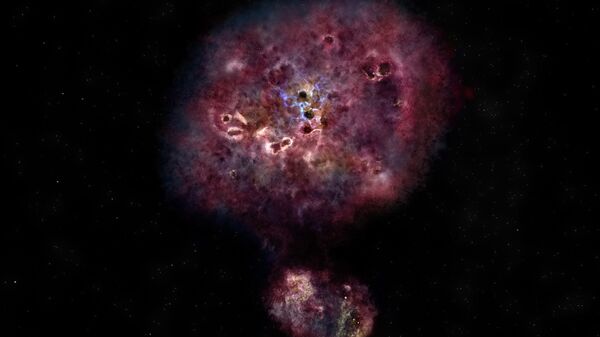An international team of astronomers has completed astonishing new research about an early galaxy known as XMM-2599 which has proved so groundbreaking that it challenges existing scientific theories about the behaviour of the early post-Big Bang universe.
According to the scientists, who recently published their work in the Astrophysical Journal Letters, the galaxy managed to pump out over 300 billion stars by the time the universe celebrated its two billionth birthday, only to stop shortly after without any explanation.
“Even before the universe was 2 billion years old, XMM-2599 had already formed a mass of more than 300 billion suns, making it an ultramassive galaxy,” Ben Forrest, a postdoctoral scholar at UC Riverside and lead author of the study, said in a press statement.
“More remarkably, we show that XMM-2599 formed most of its stars in a huge frenzy when the universe was less than 1 billion years old, and then became inactive by the time the universe was only 1.8 billion years old,” the scientist explained.
Dr. Gillian Wilson, study’s coauthor and professor at UC Riverside’s department of astronomy and physics, said it the galaxy’s ‘live fast – die young’ approach was odd, and challenges previously established models on galaxies’ life cycles. “What makes XMM-2599 so interesting, unusual, and surprising is that it is no longer forming stars, perhaps because it stopped getting fuel or its black hole began to turn on. Our results call for changes in how models turn off star formation in early galaxies,” she explained.
Dr. Danilo Marchesini of Tufts University, another of the study’s coauthors, provided more insight. “In general, early-formed galaxies should be smaller in mass, because the current model of structure formation is hierarchical –small, low-mass galaxies would be expected to form first, and then they would merge to form bigger, more massive galaxies at a later time,” he said. XMM-2599 fundamentally challenges this model.
The scientists collected their data about XMM-2599 using the W.M. Keck Observatory in Hawaii. Percy Gomez, who works as an astronomer at the observatory, explained that finding the galaxy required painstaking, hours-long observations to determine its mass, distance from Earth, and other parameters.
At its peak, XMM-2599 is believed to have given birth to over 1,000 stars a year. By contrast, our galaxy, the Milky Way, creates just one new star annually. The supermassive galaxy is believed to be about 310 billion times larger than the Sun in terms of total stellar mass. The Milky Way galaxy, meanwhile, is ‘just’ 100 billion times larger than the mass of the Sun.
According to Dr. Wilson, the galaxy’s discovery creates a series of unanswered questions. “We have caught XMM-2599 in its inactive phase. We do not know what it will turn into by the present day. We know it cannot lose mass.” The academic wonders whether the ultra-massive galaxy may eventually attract other galaxies to create a mega-cluster of stars.

